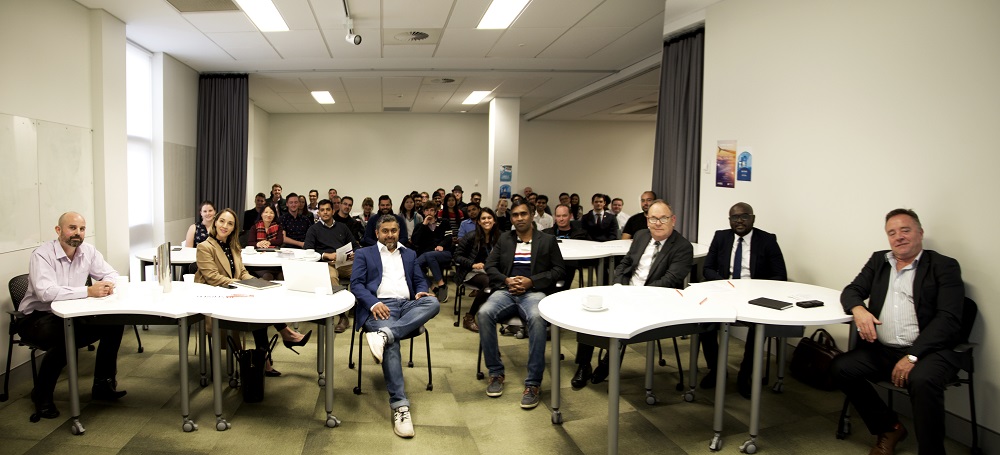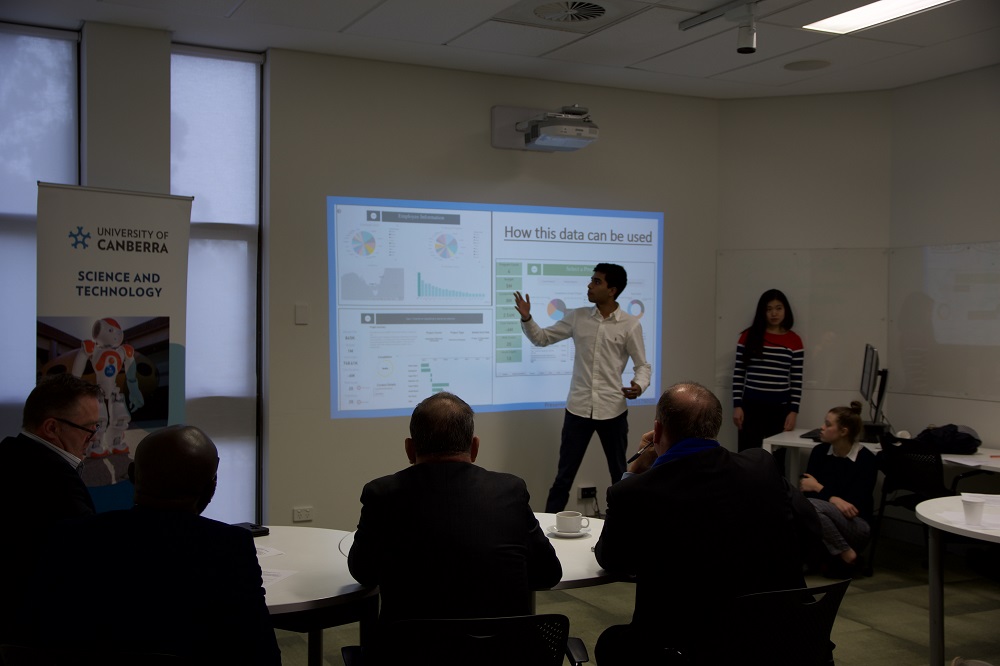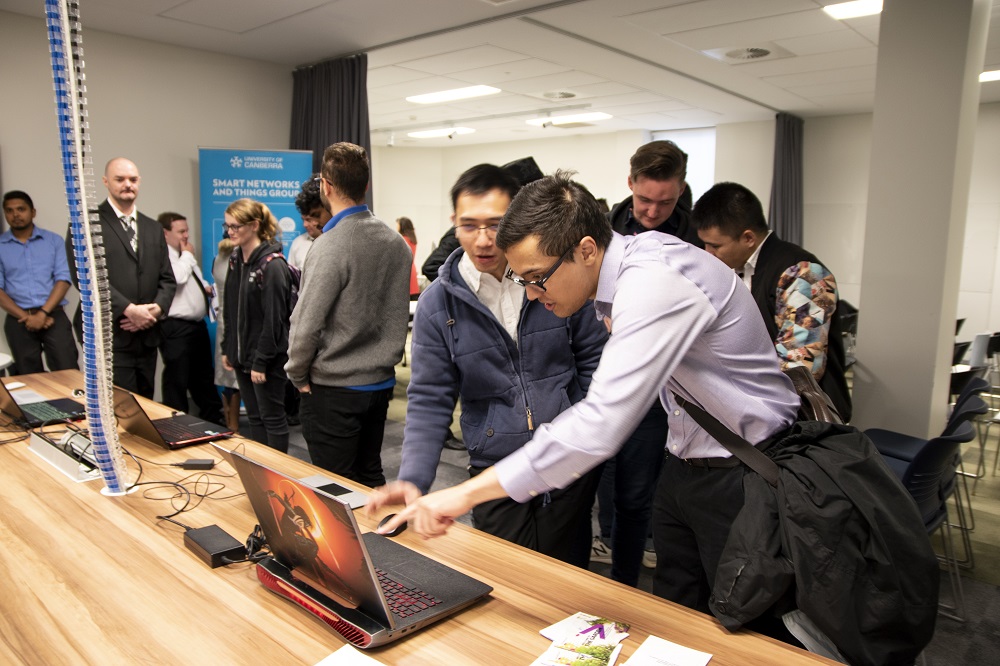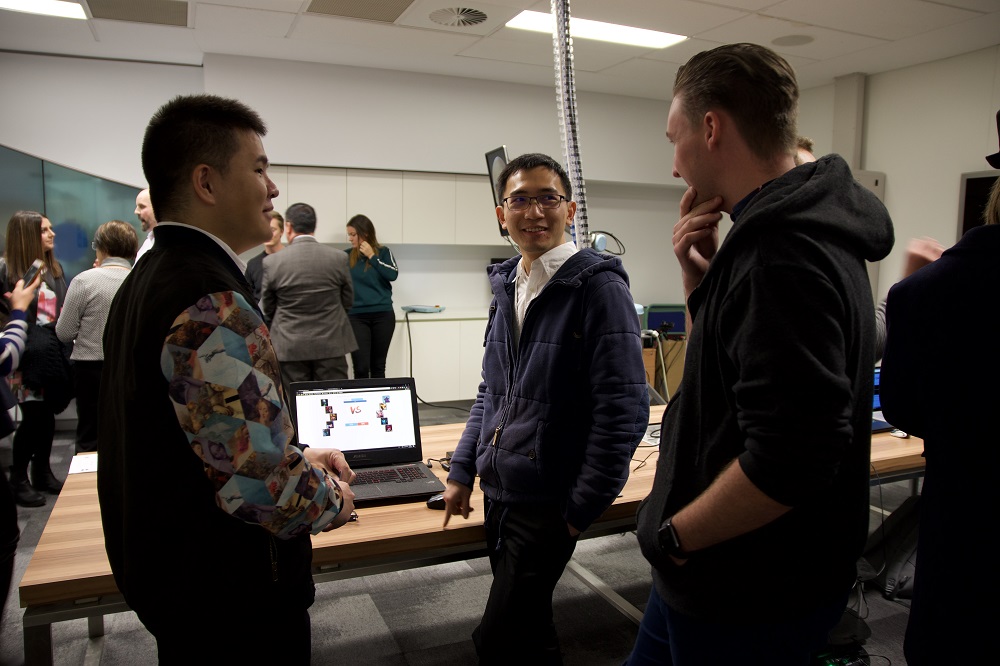Suzanne Lazaroo
4 July 2019: Technology that helps first responders “see” through the walls of burning buildings, quickly locating people who need evacuation; using data science to analyse car crashes, with the ultimate aim of better road safety; and attempting to differentiate whether text is generated by a human or a robot, by using neural networks.
These were just some of the exciting, innovative projects that students from the University of Canberra presented at the Students + Industry event held earlier this year.
Each semester, Careers UC and the Faculty of Science and Technology team up to celebrate projects which channel knowledge into practical solutions for real-world challenges – just one of the pillars of the University’s educational strategy.

Students + Industry is also an opportunity to showcase the University’s numerous partnerships with industry, and an opportunity for student teams to receive feedback from these industry partners on their work – better preparing them to translate their ideas for industry.
Associate Professor Dr Damith Herath from the Faculty of Science and Technology started the event as a pilot project a couple of years ago, mainly to provide students with a platform to showcase their work to a wider audience outside of their immediate supervisors and fellow students.
“It has since grown to become a celebration of creativity, a coming of age and a meeting of minds, an opportunity for students and academics to share ideas with the industry and to jointly explore new possibilities,” Dr Herath said.
“The event has now become a permanent fixture in the University’s academic calendar and students, academics and the local industry look forward to it eagerly!”
This year’s event included industry guests from Instaclustr, Accenture, Xero, the Australian Computer Society, the Commonwealth Superannuation Corporation, Avanade, PCUBED, Tata Consultancy Services, PricewaterhouseCoopers (PwC) Australia, and the Canberra Innovation Network.

The event opened with a keynote address from Olympia Yarger, the Founder and CEO of Goterra, a start-up which applies robotics technology to an insect farm to provide sustainable organic waste management and support Australian agriculture.
Delivering an inspiring address, she set a tone of innovation rooted in the real world, continuous collaboration and constant curiosity for the student teams in attendance. “It’s ultimately important to solve real problems, rather than just playing with technology,” she said.
Ms Yarger also advocated for resilience and determination.
“Always ask questions, regardless of whether you get flack for it,” she said. “Have the passion to continue constant enquiry, and always look for opportunities for mentorship and collaboration.”
Student Edward Prior presented his project on the use of neural networks to identify and classify textiles, work which could impact the textile recycling process. “The hardest part of this was improving the accuracy of a neural network to above 90 per cent – but I managed to get it to 96 per cent, which was significant,” he said.
Also drawing on neural networks for his project, Alexander Sinnott used 1,400 targeted samples to see if the networks could systematically identify the difference between text generated by machines, and text generated by humans. “We reached a peak accuracy of 98 per cent, and the model turned out to be very versatile because it could be applied across various platforms,” Mr Sinnott said.
For Adam Hoad, Eddie McCarthy and Daniel Mustaine, their project was inspired by the incredible work first responders do, particularly in the case of a fire.

“We wanted to help enable responders to rescue people faster,” Mr Hoad said. Their project incorporated a wireless sensor device that uses radio frequency signals that bounce off and detect movement.
The team of Natalie Taylor, Yuqing Wu and Tharindu Jayasekara came up with a dashboard to enhance strategic decision-making in large projects, using the most up-to-date information available. This approach was geared towards simplifying both processes and communication, therefore amplifying individual and project success.
Using data science to model traffic in the ACT, Nadia Firdausi, Aleksandar Draskovic, Shallo Waziri and Muhannad Alahmadi analysed 56,200 crashes in the ACT to assess risk levels, and investigate how these risk levels might affect driver safety. The project formed the basis of a potentially much larger road safety initiative.
These were just some of the projects showcased at Students + Industry; presentations were followed by a feedback session from industry guests, hosted by Dr Herath.
It was a valuable session that gave students input and advice on the technical aspects of their projects and how to best present them to industry.
Professor Eileen McLaughlin, Executive Dean of the Faculty of Science and Technology at the University of Canberra, said that it was amazing to see such high value collaborations at the University, leading to real-world solutions in diverse areas from environmental management to business systems.
“This event is fundamental to UC’s mission to train the next generation of critical thinkers and communicators in engineering and information technology for Australia. I would like to thank all our industry partners and sponsors,” she said.

“I have been to a couple of these Students + Industry sessions now, and have been impressed every time with the different approaches and use of technology to address specific issues,” said Gavin Fairlamb, Senior Manager Technology Consulting at PwC Australia.
“It is uplifting to see that UC students are looking to make a difference and make a positive impact on the industry when they enter the workforce. I hope to be invited again, as I see value in what the students are doing – as well as potential candidates for recruitment.”
The Students + Industry event is invaluable, strengthening the relationships between academia and industry, and ensuring that students at the University always have their sights firmly set on ideas and research that translate well into the real world.


